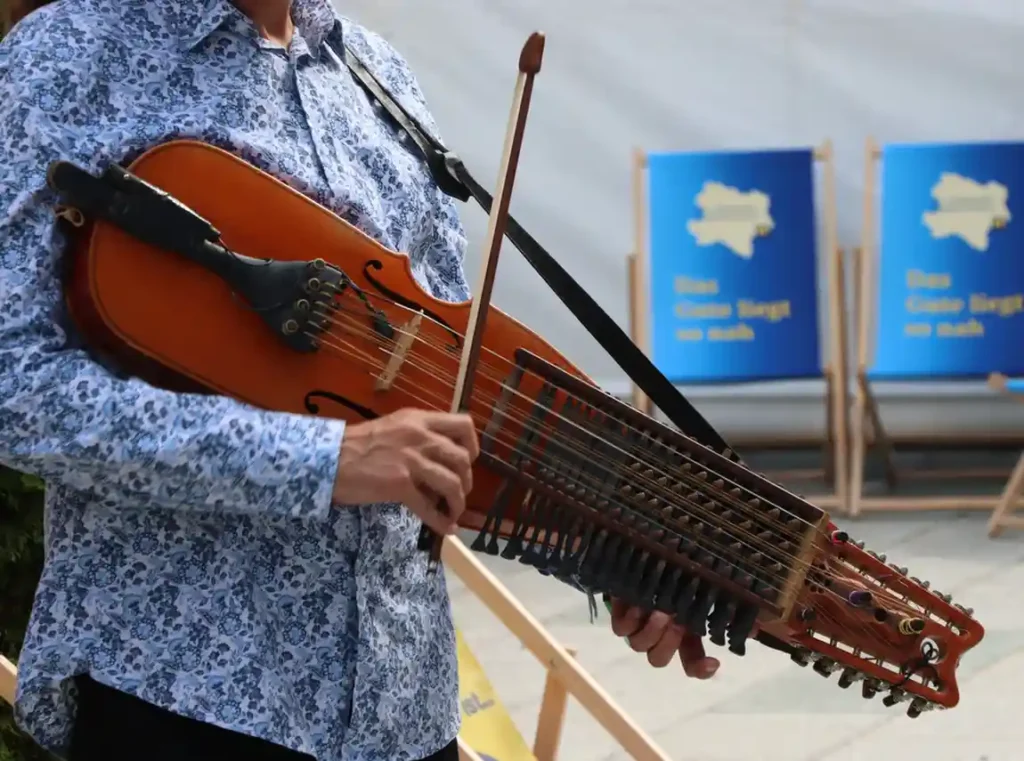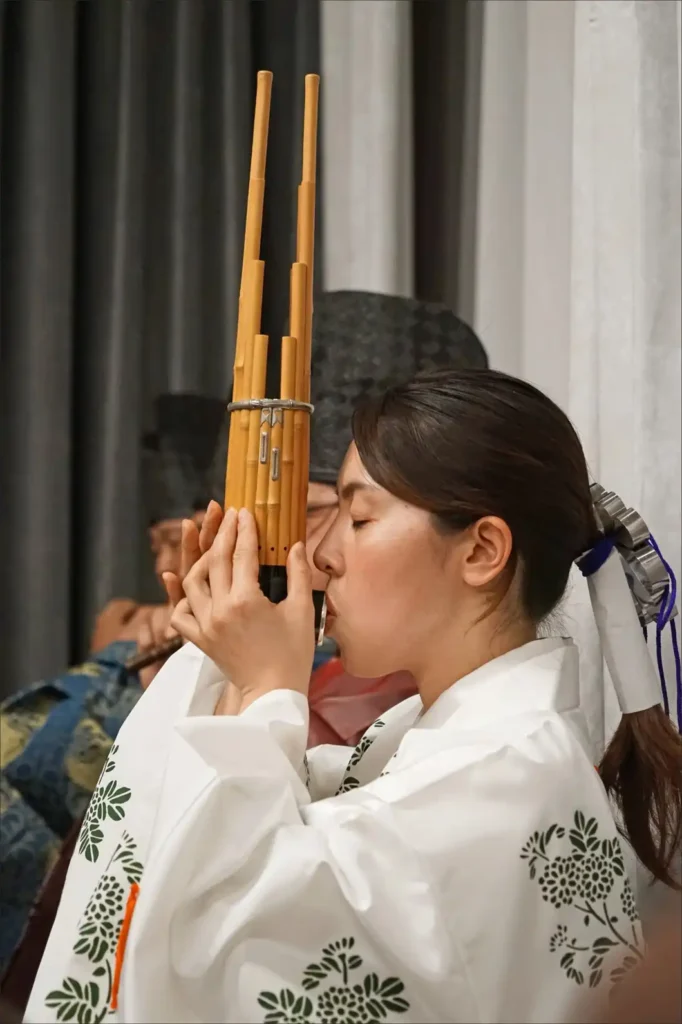Music transcends borders, yet some of the most captivating sounds come from instruments that remain virtually unknown outside their native regions. While guitars and pianos dominate the global stage, countless rare musical instruments offer unique tonal landscapes that have shaped local cultures for centuries.
These extraordinary instruments represent more than just musical craftsmanship—they embody the soul of their communities, carrying stories, traditions, and techniques passed down through generations. Each one produces sounds that simply cannot be replicated by mainstream instruments, making them treasures worth discovering.
Let’s explore five remarkable instruments that showcase the incredible diversity of human musical expression across different continents.
1. Nyckelharpa (Sweden)

The Keyed Fiddle Wonder
Sweden’s Medieval String Marvel
The nyckelharpa, literally meaning “keyed harp,” stands as one of Sweden’s most distinctive musical contributions. This fascinating instrument combines elements of both violin and hurdy-gurdy, featuring strings that are bowed while keys press against them to change pitch. Dating back to the 14th century, the nyckelharpa creates hauntingly beautiful melodies that perfectly capture the essence of Nordic folk music.
Where It’s Used
The nyckelharpa thrives primarily in Swedish folk music circles and has gained popularity in other Scandinavian countries. Musicians use it for traditional dance music, ballads, and increasingly in contemporary folk fusion projects across Europe and North America.
Fascinating Facts About the Nyckelharpa
- Unique playing technique: Players bow the strings while simultaneously pressing wooden keys that act like frets
- Multiple string configurations: Modern versions typically have 16 strings, including melody, drone, and sympathetic resonating strings
- UNESCO recognition: Swedish nyckelharpa music was added to UNESCO’s list of Intangible Cultural Heritage
- Revival story: Nearly extinct by the 1960s, dedicated musicians successfully revived this instrument through workshops and festivals
2. Hang / Handpan (Switzerland)

The Steel Percussion Innovation
Switzerland’s Modern Sound Sculpture
The hang drum, also known as a handpan, represents one of the newest additions to rare instruments, invented in 2000 by Swiss creators Felix Rohner and Sabina Schärer. This mesmerizing steel percussion instrument produces ethereal, bell-like tones that seem to float in the air. Its UFO-like appearance and otherworldly sounds have captivated musicians and listeners worldwide.
Where It’s Used
Handpans have found their way into meditation music, street performances, and therapeutic sessions. Musicians across genres incorporate them into ambient music, world fusion, and even contemporary classical compositions, making them popular in yoga studios and wellness centers globally.
Interesting Things About the Handpan
- Extremely limited production: Original PANArt Hang drums were made in small batches, making authentic instruments incredibly rare and expensive
- Tuning precision: Each instrument is hand-tuned to specific scales, creating unique harmonic relationships
- Playing technique: Musicians use only their hands and fingers, never mallets or sticks
- Global waiting lists: Due to high demand and limited production, some makers have waiting lists spanning several years
3. Didgeridoo (Australia)

The Ancient Wind Instrument
Australia’s Sacred Breath of the Dreamtime
The didgeridoo stands as one of the world’s oldest wind instruments, with archaeological evidence suggesting it has been played by Indigenous Australians for at least 1,500 years. This long wooden tube produces deep, resonant drones through a technique called circular breathing, creating complex rhythmic patterns and overtones that connect players to ancient Aboriginal traditions.
Where It’s Used
Originally sacred to Aboriginal Australian culture, the didgeridoo now appears in world music, meditation practices, and therapeutic applications. However, it’s important to note that traditional use remains culturally significant and ceremonially restricted in many Aboriginal communities.
Highlights About the Didgeridoo
- Circular breathing mastery: Players maintain continuous sound by breathing in through the nose while pushing air out through the mouth
- Natural construction: Traditional instruments are made from eucalyptus branches hollowed out naturally by termites
- Therapeutic benefits: Playing the didgeridoo can help reduce sleep apnea and strengthen respiratory muscles
- Cultural sensitivity: Many Aboriginal groups consider certain didgeridoos sacred, and some traditions restrict who can play them
4. Erhu (China)

The Chinese Two-String Violin
China’s Emotionally Expressive Bowed Beauty
The erhu, often called the Chinese violin or two-string fiddle, ranks among China’s most beloved traditional instruments. Despite having only two strings, skilled players can produce an incredible range of emotions and techniques that rival any Western string instrument. Its distinctive sound, sometimes described as resembling the human voice, has made it central to Chinese classical and folk music for over a thousand years.
Where It’s Used
The erhu features prominently in Chinese opera, folk ensembles, and contemporary orchestras. Musicians worldwide now incorporate it into film soundtracks, world music projects, and cross-cultural collaborations, bringing its expressive capabilities to global audiences.
Unknown Facts About the Erhu
- Snake skin resonator: Traditional erhus use python skin stretched over a wooden sound box, though synthetic alternatives exist today
- No fingerboard: Players press strings directly with fingertips, allowing for smooth glissandos and microtonal expressions
- Master craftsmanship: High-quality erhus require specific wood aging processes and precise construction techniques passed down through generations
- Modern evolution: Contemporary erhus sometimes feature additional strings or electric amplification while maintaining traditional playing techniques
5. Shō (Japan)

The Japanese Mouth Organ
Japan’s Celestial Reed Ensemble
The shō represents Japan’s ancient wind instrument tradition, consisting of 17 bamboo pipes arranged in a circular bundle. This sophisticated mouth organ produces gentle, harmonious clusters of notes that create an almost heavenly atmosphere. Dating back over 1,000 years, the shō has remained virtually unchanged, preserving its role in Japan’s most sacred musical traditions.
Where It’s Used
The shō serves as a cornerstone of gagaku (Japanese court music) and certain Buddhist ceremonies. While primarily traditional, contemporary composers have begun incorporating its unique harmonic clusters into modern classical and experimental music compositions.
Special Features of the Shō
- Breath technique: Players both inhale and exhale to produce sound, allowing for sustained notes and smooth transitions
- Warming ritual: Musicians must warm the instrument with their breath before playing to prevent moisture from blocking the reeds
- Limited repertoire: Traditional shō music consists of specific melodic patterns and chord clusters passed down through centuries
- Master-student tradition: Learning the shō requires years of study under certified masters who maintain strict performance standards
The Lasting Impact of Musical Diversity
These five remarkable instruments demonstrate how human creativity and cultural expression manifest in countless beautiful ways across our planet. Each one offers unique sounds, playing techniques, and cultural significance that enrich our global musical heritage.
Whether it’s the haunting melodies of a Swedish nyckelharpa or the meditative tones of a Japanese shō, these rare instruments remind us that music truly is a universal language with infinite dialects. They deserve recognition not just as curiosities, but as vital components of our shared human artistic legacy that continue inspiring musicians and listeners around the world.

